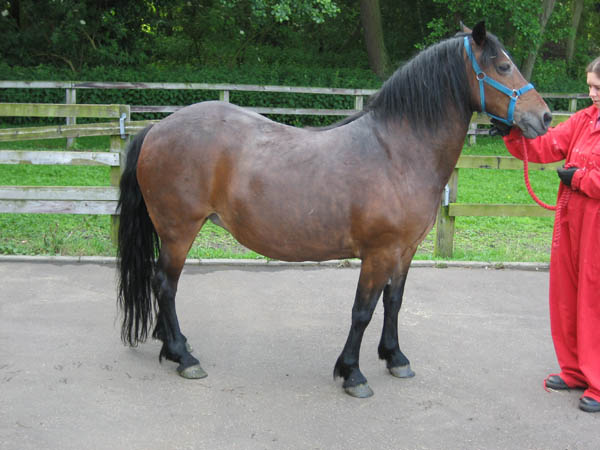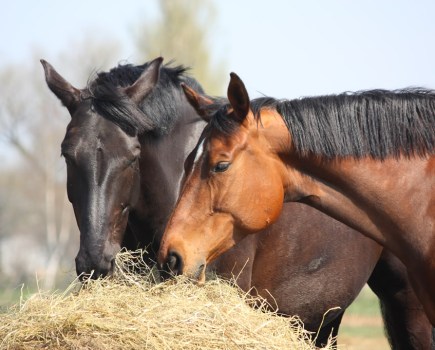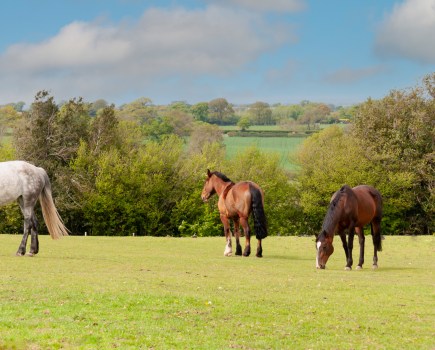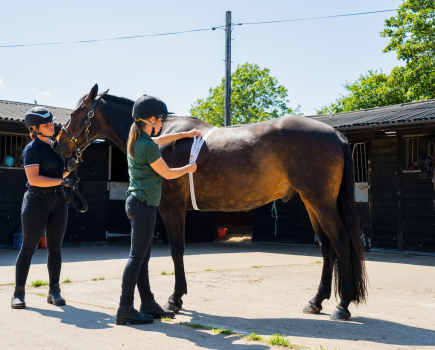It can be hard to tell whether your horse has a weight problem. The likelihood is that – unless you feel pretty certain he hasn’t – he could well do!
Leisure horses are at particular risk of being overweight if their workload is light and the loving kindness they are shown by their owner includes an endless supply of delicious food.
If your horse is overweight then following the advice outlined here will help a great deal.
Get the weight off your horse
- Late winter/early spring is the ideal time to get and keep the weight off your horse – before the spring grass kicks in
- Take rugs off your horse earlier than usual, as he will use fat to keep himself warm. Unclipped natives with shelter shouldn’t need rugging at all – and if you are used to rugging your horse up very warmly, try using a lighter-weight version of the rug you would normally use.
- Section your field off for strip-grazing or invest in a grazing muzzle, and use these before the spring grass arrives. Remember it is better for your horse to be carrying less condition as he goes into spring, as he is designed to put weight on as the grass grows.
- Put more animals in the same field to share the grass between more mouths. Maintain the grazing correctly, picking up droppings and so on.
- Mow your grazing to mimic having more animals in the same area. Make sure no cuttings are left in the field.
- Start an exercise regime. If your horse is very overweight you will need to take it slowly. The best form of exercise for weight loss is actually regular brisk walking – so try to build this into your daily routine.
- Remember never, ever to put your horse on a starvation diet. He is a trickle feeding and needs regular food going through his system to avoid complications such as colic. Speak to a feedline for advice on your individual situation.
- Soak your hay for 12 hours to remove the calories so you can feed your horse lots of bulk without adding to any weight problems. Use fresh water each time.
- You can also feed oat or barley straw as an alternative to soaked hay or to dilute unsoaked hay.
- Check your horse’s droppings to make sure the straw fibres are no more than 2 mm long. If they are, straw is not suitable for your horse and you could risk colic.
- If you feed straw or soaked hay, you must feed a general vitamin and mineral supplement as well.
- You could also use a small-holed haynet to help slow down your horse’s eating.
Assess his diet
- If you are giving your horse a small feed simply to carry a supplement, it could be enough to stop him losing excess weight. Can you feed the supplement in a way that provides fewer calories?
- If you use a concentrate feed, speak to the manufacturer to find out whether you are doing light, medium or hard work – their definitions may be different to yours.
- Weigh your feed
- You may be surprised how much extra you are feeding. Find a container that fits exactly the amount you should be giving and no more. It is very easy for half a scoop to turn into three-quarters or more.
- Do you really need that rug?
- It’s very easy for us to rug our horses because we wouldn’t like to be out in the winter without a coat, but remember that horses already have waterproof coats and their own central heating systems.
- Digesting fibre generates a lot of heat, which helps keep the horse warm from the inside out. Some horses will need to wear a rug but if your horse is overweight consider whether he could go without or if a lighter weight rug would be more suitable.
Keep monitoring your horse
- Fat-score and use a weightape on your horse every two weeks. You will notice any changes in weight far more quickly than you could by eye. Make sure you use the tape at the same time of day, as horses’ weight fluctuates significantly over a 24-hour period.
- Keep an eye on how your horse is affected by any changes you make. What is suitable at one stage may not be suitable a few weeks down the line.
- Remember, if your horse’s weight changes significantly at any point, his tack may no longer fit.
- Poorly fitting tack can lead to a variety of problems, so get this checked by an expert.
- Finally, always give your horse time to adjust to any changes you make.









